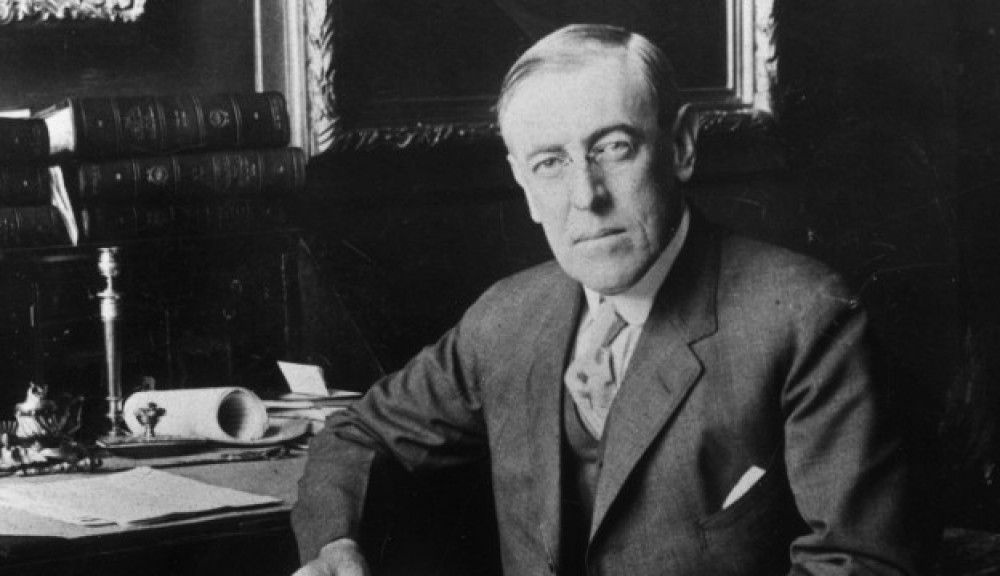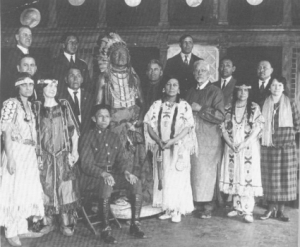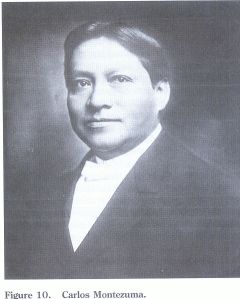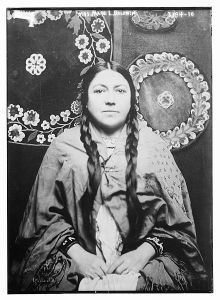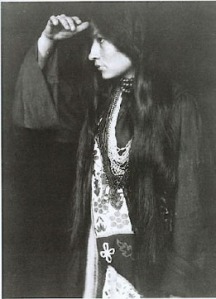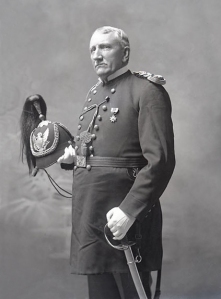The Society of American Indians Convention
– Cedar Rapids, Iowa, September 26 – 30, 1916 –
Outline (click on a link to jump to that section):
I. The Society of American Indians – Historical Introduction
II. Convention Summaries – Document Text
III. The Cedar Rapids Convention – Explanation and Analysis

Seal for the Society of American Indians
I. The Society of American Indians – Historical Introduction:1 (unless otherwise noted)
By the end of the nineteenth century, American Indians were considered to be a disappearing race. They had been defeated in the Indian Wars, moved on to reservations, and forced to farm divided-up reservation land. Their children were being taken away to boarding schools, and their culture was rapidly being destroyed as the American government attempted to assimilate Indians into Western culture.2
But many Indians were not ready to give up their culture. As Progressivism grew in white America, Indian Progressivism, or “Red Progressivism,” also began to develop. These Indian Progressives believed that they should indeed become educated, and that they should adapt their attitudes and behaviors to those of white American society. It was these Indians, gathered together by Professor Fayette A McKenzie of Ohio State University, who ultimately formed the Society of American Indians.

Fayette A. McKenzie, professor at Ohio State University
McKenzie, a white supporter of American Indians, believed that a system of “race transformation,” based on social work and Christian idealism, needed to be put into place to help Indians at various stages of assimilation. He also believed that this system should be implemented not only by whites, but by educated Indians as well. After months of communication, he gathered a group of Indians together in Columbus, Ohio, in April 1911. This group included Dr. Charles Eastman, who would eventually become the Society’s most prominent member, Dr. Carlos Montezuma, Thomas L. Sloan, Charles E. Daganett, Laura Cornelius, and Henry Standing Bear. Other Indians who would also gain prominence in the Society included Hiram Chase and Henry Roe Cloud. At this meeting, four goals were determined for the Society: they must work to bring the Indian to “modern life;” the Indians must develop self-sufficiency and -help; Indians are capable of making valuable contributions to the United States; and whites must help Indians in this mission in order to “redeem” themselves for what they had done to the Indians.
The man most responsible for the development of the Society was Arthur C. Parker, an anthropologist with an Iroquois background. He played the role of peacekeeper between disagreeing factions within the Society. These disagreements were a problem for the Society almost from its beginning, and were almost inevitable due to the variety of tribes working together. He was also the editor of the Society’s Quarterly Journal and served as the secretary-treasurer of the Society.

Arthur C. Parker, anthropologist and prominent member of the Society of American Indians
The Society of American Indians was a means to express Indian Progressives’ focus on Americanizing Indians as well as creating a Pan-Indian identity. It had a non-Indian organizational format, and there were no chiefs or tribal leaders among its leadership. They believed that being Indian was an interior, rather than exterior, quality, and they desired progressive solutions to their mutual problems. However, the Society wanted to emphasize that it was clearly Indian. The organization changed its name early on from the American Indian Association to the Society of American Indians to emphasize that it was an Indian, not a “white-run,” movement. It combined leaders of multiple tribes to express its focus on Indians as a race instead of individual tribes. And the sentiment that bound its leaders together was that Indians were not vanishing; rather, they were vital to a democratic, progressive nation.
Though the Society of American Indians was founded on noble goals, compromise and Pan-Indian unity proved to be difficult. Many members held similar hopes for the future of the Indian race, but on specific topics they placed more emphasis on working for their individual tribe rather than the race as a whole. In addition, new, younger Indian Progressives focused on tribal rather than Pan-Indian issues. The Society was also unable to achieve one of its main goals, the abolition of the Indian Bureau. This provided further discouragement for the hope of an Indian-run organization. The Society of American Indians disintegrated in the 1920s and was finally dissolved in the 1930s. In spite of its failures, it paved the way for future Pan-Indian movements.
Other Important Members of the Society of American Indians

Dr. Charles Eastman
II. Convention Summaries – Document Text:
*For a full text copy of the Cedar Rapids Convention proceedings within the American Indian Magazine, click here (pp. 209-269).
Editorial Comment (pp. 213-215):
This section is regarding the success of the Cedar Rapids conference in Iowa, during 1916. It discusses how the Society of American Indians were given great reviews regarding how civilized and educated they appeared. However, they received criticism from Dr. Montezuma for not doing more to get rid of the Indian Bureau. At the end of the Editorial it encourages Society members to read through the magazine thoroughly to know what his or her duty is as a member and in some cases, an Indian.
A Conference on Race Progress the Sixth Annual Conference of the Society of American Indians (pp. 216-222):
This article, written by the Editor-in-Chief of the American Indian Magazine, is the main overview of the conference. It starts with recognition to Cedar Rapids for being friendly, inviting, and cooperative with all of the Indians. It then goes on to explain important topics that were discussed at the event, such as Dr. Carlos Montezuma’s want to get rid of the Indian Bureau, while others argue for its keep. The article then goes on to explain that the Society agreed that its existence is important for the continued betterment of the society. It ends with the encouragement for both reds and whites to join the Society of American Indians.
The Cedar Rapids Platform (pp. 223-224):
This piece gives the concluding verdict to all of the topics discussed at the conference in Cedar Rapids, IA. Firstly the society agreed to look into getting rid of the Indian Bureau. They stated that with the progress of the education of Indian children they would soon be recognized as citizens of the country, in which there would be no need for the Bureau to exist. The second agreement they came upon was to emphasize the need to encourage Indian students to take advantage of federal schools, because they can be used as a tool for integrating their children with white children. Thirdly, the Society of American Indians all agreed that abstinence in regard to alcohol is the way to live a happy life. They also agreed to support the Gandy Bill which prohibited the use of peyote among the Indian people. Next they agreed on improving the environment on the reservations to keep their people healthy. Lastly they reaffirmed principles they had agreed on in previous conferences.
Expectation and Reality (p. 225):
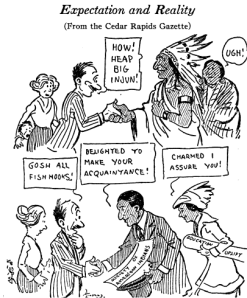
This cartoon from the Cedar Rapids Gazette depicts how the Indians surprised the people of Cedar Rapids by showing that they had become civilized and educated
.
Certain Addresses and Discussions at the Cedar Rapids Conference (pp. 227-229):
This is the opening speech given by the President of the Society. In this address, President Coolidge said that the purpose of the organization was for the welfare of the Native American race as well as the betterment of the country. He recognized that as a group, SAI, faced many challenges, but hoped that the conference would bring unity and peace among them. The President also recognized that the Indian community was in a state of chaos, but hoped that with cooperation they would be able to move toward, “…citizenship, self-support, and self-responsibility.”3 He then discussed the important qualities to look for in officers as well as how the process of voting for them would go.
Some of Our Work During the Year (pp. 229-233):
At the beginning of his speech, Secretary Parker explained that it had been a difficult year for the Society. He informed the people that the members of the officers of the Society do almost everything for free in their spare time, with only a few exceptions. He continued to talk about financial issues of the organization as well as the need for more workers. He then led into the success of American Indian Day, and how over fourteen thousand schools in New York alone recognized it for the day. He then touched on the fact the Society continues to make progress, slowly, but surely.
The Indian and His Liquor Problem (pp. 234-238):
In this speech, Henry Larson spoke against the use of alcohol. He discussed how demoralizing and destructive to the human body it could be, for all people, not just American Indians. He encouraged the members of the Society to first and foremost practice abstinence. He then said it was each member’s duty to tell all people they came in contact with, of their stance against alcohol. He furthered his speech in taking a stance against peyote. Larson discouraged all tribes from using peyote because of its similar characteristics of alcohol. At the end of Larson’s speech, General Pratt stood up seconding Larson’s notion on getting rid of peyote.
The Indian School System Today (pp. 238-244):
In his speech, Peairs advocated for improvement in the education of all American Indian children. He first started out by introducing the idea of a “finding period” that lasts three years, in which girls would be required to do domesticated work such as cleaning, sewing, and cooking, while boys would be required to do farming, carpentry, and blacksmithing. He then went on to propose extension courses to be put into place for the Native American students so that they could better compete with the whites. Lastly, Peairs emphasized the need for American Indians to be placed in public schools, for hopes of getting all American Indian children into schools within the next few years to follow.
Civilizing the Indian by Contact—Not Segregation (pp. 244-248):
In General Pratt’s speech, he emphasized the need to integrate the American Indian into society. He explained that the government encouraged all Native Americans to just be Indians for the fear of seeing their full potential. He used a few examples of American Indians he encountered, and explained that they go back to their old way of life only if they get paid for it. Pratt wanted the American Indians to become civilized and stay civilized.
The Case of the Lac Court D’Oreilles Chippewa (pp. 248-252)
At the beginning of the section, it summarizes the speech by Ira Isham in regard to how American Indians had been having trouble on their land. He informed the Society that his people had been hunting and fishing on their land, and were getting arrested for it. He then explained that there was a treaty that was still intact, that promised the American Indians the right to hunt on ceded land. He mainly asked for help for the Society on the next approach of protecting the rights of the Native Americans.
Then following his case was a speech made by Guibord, asking for help for his tribe because he felt as though they were being cheated. He informed the members that his people were getting four times less for their timber than what it was being sold for at market, and also about an incident where land was sold by the government, without consulting the tribe. Lastly he explained how the Indian Commissioner refused to give his people money because he feared they would waste it on alcohol. As a conclusion, he too asks the Society what to do next.
Open Debate on the Loyalty of the Indian Employees in the Indian Service (pp. 252-256):
This section covers the debate that took place mainly between Dr. Montezuma and President Coolidge. Dr. Montezuma argued for the elimination of the Indian Bureau because he believed that their system was corrupt. The President on the other hand argued that they needed to stay loyal to the government and the race, and could do so by working together with the Indian Bureau. Dr. Montezuma then went on to argue that the Indian Bureau was holding all of the Indians back from reaching their full potential. As the debate continued, multiple members of the Society shared their opinions on the matter. At the end of the debate, the President stated that they all needed to take time to figure out what everyone’s stance was on the Indian Bureau, but it needed to be done in a matter that would show respect to the government.
Release the Indian Graduate (pp. 256-257):
In his brief speech, Robert Hall suggested that once Indian students complete the amount of schooling that is required by the government, that they should be able to attain citizenship.
How to Solve the Problem (pp. 257-259):
In this section, Delos Lonewolf addressed some of the subjects previously discussed at the conference. He explained how he himself had used peyote in the past, and that was used as a tool to spread Christianity among the people. He also went on to discuss how he believed the Indian Bureau should not be abolished, but should instead give more people privileges with money they have worked hard to earn. Lonewolf’s stance is that work is the key to all of the American Indians problems.
Opposition to the Indian Bureau (pp. 259-260):
During his speech, Father Gordon talks about how it was his belief that the Indian Bureau kept all American Indians in bondage. He then asked the Society to do something so that American Indians could become citizens, mingle with the white race, and take care of themselves.
Address before the Sixth Conference (pp. 260-262):
This speech given by Dr. Montezuma was not given at the sixth conference in Cedar Rapids, but was included in the American Indian Magazine because it pertains to the Society’s effectiveness. He argued that the organization as headed in the wrong direction because it was trying to work with the Indian Bureau, when it should be against it. He then stated that American Indian Day was a sham, and how he believed it would cause harm to the Society, rather than good. Montezuma finished his speech by stating that he believed the Society of American Indians crushed the liberty of the Indian race rather than helping them.
Society of American Indians is a Success (pp. 262-265):
To counter the previous article regarding the speech of Montezuma, the magazine included a speech given by Dr. Moffett who argued in favor of the Society’s progress. He stated that the organization had recognized that in order to succeed they would have to compromise. He believed that they not only did that well, but that they were founded on sound principles that would bring them success. He continued his speech with a warning to the Society that in order to avoid future failure, they needed to keep their current friends as friends in the future. Dr. Moffett then concluded his speech in saying that the Society of American Indian not only succeeded in helping American Indians, but also they succeeded in bettering the country.
Newspaper Comment (pp. 265-269):
The last section of the American Indian Magazine was small clips of articles from other newspapers, regarding the Conference in Cedar Rapids, Iowa. Below are summaries of the individual articles.
• Reporters Took Indian humor Seriously : This section explains a joke that was exchanged between Dr. Montezuma and President Coolidge. The joke was Dr. Montezuma saying how he knew he would be able to fight the President based on their ancestral tribes. Among the Indians this was understood to be the joke that it was, but Newspaper reporters took it as tension that still existed between tribes.
• Society of American Indians on the Status of the Indian : This newspaper article informed the people that it was believed that many changes would be occurring soon for the Native American people. It explains how much progress was made, especially towards their civilized and educated appearance.
• Indian Woman has Accomplished Much for the Uplift of Her Race : This next article is about Zit-ka-la-Sa and how she had devoted much of her life to teaching her people the ways of civilization.
• Leading Indian Suffragist : This article discussed how Marie L. B. Baldwin fought for the rights of Indian women, as well as white women.
• Mrs. Baldwin a Lawyer : This is a short clip explaining how Baldwin was not only a lawyer, but also an active member of the Indian Bureau.
III. The Cedar Rapids Convention – Explanation and Analysis:
The Cedar Rapids Convention of the Society of American Indians was held from September 26-30 at Coe College in Iowa. The Society themselves explained that they chose the location due to its centrality for many Indian tribes. In addition, the convention was held in a Western city. Therefore, it represented an ideal for which Indians were to strive, Westernization or Americanization. The Society’s quarterly journal from 1916 even points out that all who attended the convention were Western in style.4
The main issues on which the convention focused were the abolition of the Indian Bureau and the growing new peyote religion. The platform ultimately established three key points: the gradual abolition of the Indian Bureau, the need for Indian preparatory schools to help Americanize Indian children, and the condemnation of peyote, equating it with alcohol and encouraging abstinence in all areas of life.
Though the convention generally agreed on these three issues, it demonstrated growing conflict among its members. Divisions over the issues were centered around members’ associations with their individual tribes rather than the Indian race as a whole. There was also disagreement as to whether serving the government could be equated to a betrayal of the Indian race. The Cedar Rapids Convention itself was not very well-attended, and the Society was facing financial struggles. Though the Cedar Rapids convention resulted in a solid platform that agreed with the Society’s major principles, it also showed the growing divide within the Society and its slow undoing from within.5
